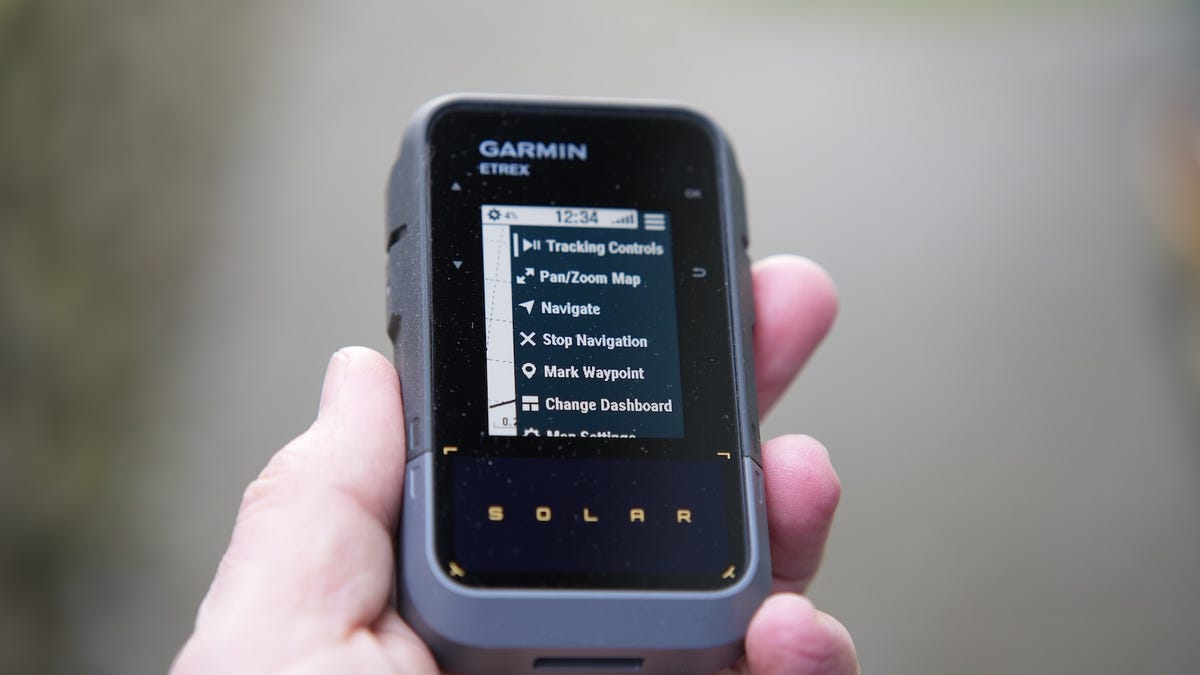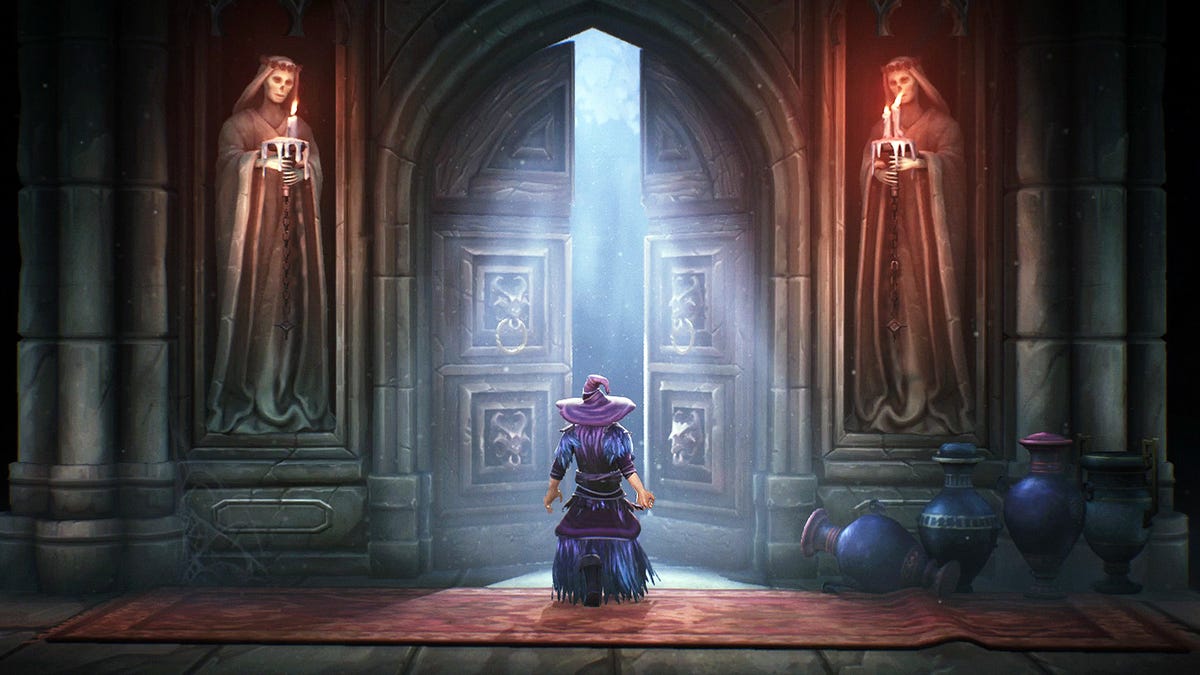Panasonic S1R II review: An excellent hybrid camera that’s cheaper than rivals
With the A1, Sony was the first to introduce a high-resolution hybrid camera that was equally adept at stills and video — but boy was it expensive. Nikon and Canon followed that template with the R5 II and Z8 models that offered similar capabilities for less money, but those were still well north of $4,000. Enter the S1R II. It’s Panasonic’s first camera that can not only shoot up to 8K video at the company’s usual high standards, but also capture 44-megapixel (MP) photos in rapid bursts. And unlike its rivals, the new model is available at a more reasonable $3,300 — half the price of Sony’s A1 II. At the same time, it’s a massive upgrade over the original S1R. The main catch is the lack of a high-speed stacked sensor found in the other models, which can cause some skewing in both images and video. As I discovered, though, that tradeoff is well worth it for the lower price and picture quality that matches its competition. All of that makes the S1R II Panasonic’s best camera yet and a very tempting option in the high-resolution mirrorless category. Design and handling The S1R II is similar to other recent Panasonic models like the GH7 in terms of the design and control layout. It’s much lighter than the original S1R at 1.75 pounds compared to 2.24 pounds, so it’s less tiresome to carry around all day. As for handling, the massive grip has a ridge where your fingertips sit, making it nearly impossible to drop. The rubberized exterior is easy on the hands, though not quite as nice as the R5 II’s softer material. I’ve always liked Panasonic’s controls and in that regard the S1R II may be the company’s best model yet. Along with a joystick and dials on the top front, top back and rear, it has lockable mode and burst shooting dials on top. You also get a dedicated button for photos, video and slow and quick (S&Q) modes, each with separate settings. There’s a dedicated autofocus switch, video record buttons both on top and front, a tally light and multiple programmable buttons. The menu system is equally good, with logical color-coded menus and submenus. You can also rapidly find your most-used functions in the quick menu. All of that allowed me to shoot photos and video without fumbling for settings. You can also fully program buttons, dials and the quick menu to your own preferences. Steve Dent for Engadget The rear display is great for content creators and photographers alike. It tilts up and down to allow for easy overhead or shoot-from-the hip photography and also swivels out to the side so vloggers can conveniently film themselves. It’s very sharp and bright enough to use on sunny days. The electronic viewfinder is also excellent with 5.76 million dots of resolution and 100 percent magnification, matching Canon’s R5 II and beating the Nikon Z8. Battery life isn’t a strong point, though, with 350 shots on a charge or just 280 when using the electronic viewfinder — far below the 640 shots allowed by the R5 II. It also only allows just over an hour of start-and-stop video shooting. However, Panasonic’s optional DMW-BG2 battery grip doubles endurance and also allows for battery hot-swapping. The S1R II supports both SDXC UHS II and much faster CFexpress Type B cards, while also supporting SSD capture via the USB-C port like the S5 IIX and GH7. The latter two storage methods enable shooting in high-bandwidth RAW and ProRes to maximize quality. Panasonic also included a full-sized HDMI port along with microphone and headphone jacks. For the best possible sound quality, the optional XLR2 accessory lets you capture four channels at up to 32-bit float quality to reduce the possibility of clipped audio. And finally, the S1R II is Panasonic’s first mirrorless model with a protective carbon fiber curtain that comes down to protect the sensor, just like recent Canon and Sony models. Performance Steve Dent for Engadget Although the original S1R could only manage an anemic 6 fps burst speeds, its successor can hit 40 RAW images per second in silent electronic mode, beating all its rivals — though shooting at that speed limits quality to 12-bit RAW. To get 14-bit quality, you need to use the mechanical shutter for burst shooting which tops out at 9 fps. However, the Panasonic S1R II doesn’t have a fast stacked sensor like rivals. The result is rolling shutter that can be a problem in some circumstances, like shooting race cars, propellers or golf swings. However, it does outperform many other non-stacked high-resolution cameras like Sony’s A7R V and Panasonic’s own S5 IIX in that area. Pre-burst capture is now available and starts when you half-press the shutter. That lets you save up to 1.5 seconds of photos you might have otherwise missed once you fully press the shutter button. With an overhauled phase-detect autofocus system and a new, faster processor, the S1R II features Panasonic’s fastest and smartest AF system yet. It can now lock onto a subject’s face and eyes quicker a

With the A1, Sony was the first to introduce a high-resolution hybrid camera that was equally adept at stills and video — but boy was it expensive. Nikon and Canon followed that template with the R5 II and Z8 models that offered similar capabilities for less money, but those were still well north of $4,000.
Enter the S1R II. It’s Panasonic’s first camera that can not only shoot up to 8K video at the company’s usual high standards, but also capture 44-megapixel (MP) photos in rapid bursts. And unlike its rivals, the new model is available at a more reasonable $3,300 — half the price of Sony’s A1 II. At the same time, it’s a massive upgrade over the original S1R.
The main catch is the lack of a high-speed stacked sensor found in the other models, which can cause some skewing in both images and video. As I discovered, though, that tradeoff is well worth it for the lower price and picture quality that matches its competition. All of that makes the S1R II Panasonic’s best camera yet and a very tempting option in the high-resolution mirrorless category.
Design and handling
The S1R II is similar to other recent Panasonic models like the GH7 in terms of the design and control layout. It’s much lighter than the original S1R at 1.75 pounds compared to 2.24 pounds, so it’s less tiresome to carry around all day. As for handling, the massive grip has a ridge where your fingertips sit, making it nearly impossible to drop. The rubberized exterior is easy on the hands, though not quite as nice as the R5 II’s softer material.
I’ve always liked Panasonic’s controls and in that regard the S1R II may be the company’s best model yet. Along with a joystick and dials on the top front, top back and rear, it has lockable mode and burst shooting dials on top. You also get a dedicated button for photos, video and slow and quick (S&Q) modes, each with separate settings. There’s a dedicated autofocus switch, video record buttons both on top and front, a tally light and multiple programmable buttons.
The menu system is equally good, with logical color-coded menus and submenus. You can also rapidly find your most-used functions in the quick menu. All of that allowed me to shoot photos and video without fumbling for settings. You can also fully program buttons, dials and the quick menu to your own preferences.
The rear display is great for content creators and photographers alike. It tilts up and down to allow for easy overhead or shoot-from-the hip photography and also swivels out to the side so vloggers can conveniently film themselves. It’s very sharp and bright enough to use on sunny days. The electronic viewfinder is also excellent with 5.76 million dots of resolution and 100 percent magnification, matching Canon’s R5 II and beating the Nikon Z8.
Battery life isn’t a strong point, though, with 350 shots on a charge or just 280 when using the electronic viewfinder — far below the 640 shots allowed by the R5 II. It also only allows just over an hour of start-and-stop video shooting. However, Panasonic’s optional DMW-BG2 battery grip doubles endurance and also allows for battery hot-swapping.
The S1R II supports both SDXC UHS II and much faster CFexpress Type B cards, while also supporting SSD capture via the USB-C port like the S5 IIX and GH7. The latter two storage methods enable shooting in high-bandwidth RAW and ProRes to maximize quality.
Panasonic also included a full-sized HDMI port along with microphone and headphone jacks. For the best possible sound quality, the optional XLR2 accessory lets you capture four channels at up to 32-bit float quality to reduce the possibility of clipped audio. And finally, the S1R II is Panasonic’s first mirrorless model with a protective carbon fiber curtain that comes down to protect the sensor, just like recent Canon and Sony models.
Performance
Although the original S1R could only manage an anemic 6 fps burst speeds, its successor can hit 40 RAW images per second in silent electronic mode, beating all its rivals — though shooting at that speed limits quality to 12-bit RAW. To get 14-bit quality, you need to use the mechanical shutter for burst shooting which tops out at 9 fps.
However, the Panasonic S1R II doesn’t have a fast stacked sensor like rivals. The result is rolling shutter that can be a problem in some circumstances, like shooting race cars, propellers or golf swings. However, it does outperform many other non-stacked high-resolution cameras like Sony’s A7R V and Panasonic’s own S5 IIX in that area.
Pre-burst capture is now available and starts when you half-press the shutter. That lets you save up to 1.5 seconds of photos you might have otherwise missed once you fully press the shutter button.
With an overhauled phase-detect autofocus system and a new, faster processor, the S1R II features Panasonic’s fastest and smartest AF system yet. It can now lock onto a subject’s face and eyes quicker and follow their movements more smoothly, while also detecting and automatically switching between humans, animals, cars, motorcycles, bikes, trains and airplanes. I found it to be fast and generally reliable, but it’s still not quite up to Sony’s and Canon’s standards for speed and accuracy.
Panasonic boosted in-body stabilization to 8 stops. That’s nearly on par with rivals, though Canon leads the way with 8.5 stops on the R5 II. Still, it lets you freeze action at shutter speeds as low as a quarter second in case you want to blur waterfalls or moving cars when shooting handheld.
Image quality
Photo quality is outstanding with detail as good as rivals, though understandably short of Sony’s 61-megapixel A7R V. Colors are as accurate as I’ve seen on any recent camera, matching or even beating Canon’s excellent R5 II. My pro photographer friends took a number of shots with the S1R II and found it slightly superior to their Sony A1, noting that they rarely needed to white balance in post.
Thanks to the dual-ISO backside-illuminated sensor, low-light capability is excellent for a high-resolution camera, with noise well controlled up to ISO 12,800. Beyond that, grain becomes more problematic and shadows can take on a green cast. JPEG noise reduction does a good job retaining detail while suppressing noise, but gets overly aggressive above ISO 6,400.
If 44MP isn’t enough, the S1R II offers a high-resolution mode that captures eight images with a slightly offset sensor position and composes them into a single 177 megapixel file (either RAW or JPEG). It can supposedly be used without a tripod, though I found I had to remain very still to get decent images when doing so.
Video
The S1R II is Panasonic’s best mirrorless camera yet for video, albeit with some caveats I’ll discuss soon. You can capture up to 8K 30p 10-bit video at a reasonably high 300 Mbps, close to what Sony’s far more expensive A1 can do. Better still, it supports oversampled 5.8K ProRes RAW video internally with no crop for maximum dynamic range, or 4K video at up to 120 fps. Finally, the S1R II is capable of “open gate” 3:2 capture of the full sensor at up to 6.4K (and 8K down the road via a firmware update), making it easy to shoot all types of formats at once, including vertical video for social media.
Some of these resolutions, particularly the 5.9K 60 fps and 4K 120 fps modes come with a slight crop of about 1.1x and 1.04x, respectively. 4K 120 fps also uses pixel binning, which introduces a loss of resolution and other artifacts like rainbow-colored moire.
That takes us to the main downside: rolling shutter. The S1R II is actually a bit better than the S5 II in that regard, with a total readout speed of about 1/40th of a second, or about 25 milliseconds at any of the full sensor readout resolutions (8K or 5.8K). That can result in wobble or skew if you whip the camera around or film fast-moving objects. However, it’s acceptable for regular handheld shooting.
One complication is Panasonic’s dynamic range expansion (DRE) that boosts video dynamic range by a stop, mostly in an image's highlights. Enabling that feature makes rolling shutter worse.
Should you need to reduce rolling shutter, you can simply disable DRE without a big hit in quality. And shooting 4K at 60p minimizes rolling shutter so that it’s nearly on par with stacked sensor cameras, while still offering high-quality footage with just a slight crop.
As for video quality, it’s razor sharp and color rendition is accurate and pleasing. Dynamic range is on the high end of cameras I’ve tested at close to 14 stops when shooting with Panasonic’s V-log, allowing excellent shadow and highlight recovery, especially in DRE mode. It’s still very good without DRE though, particularly if you’re not shooting in bright and sunny conditions.
Video AF is also strong, keeping even quick-moving subjects in focus. Face, eye, animal and vehicle detection work well, though again, the system isn’t quite as reliable as what I saw on Sony and Canon’s latest models.
The S1R II offers more stabilization options than its rivals, though. Optical stabilization provides good results for handheld video, while electronic stabilization (EIS) smooths things further . Cranking that up to the most aggressive high EIS setting provides gimbal-like smoothness but introduces a significant 1.5x crop.
Along with those, Panasonic introduced something called “cropless” EIS. That setting takes advantage of unused areas of the sensor to correct corner distortion typical with wide angle lenses while also fixing skew. I found it worked very well to reduce rolling shutter even for quick pans and walking, which may help alleviate such concerns for some creators.
So yes, rolling shutter wobble is worse on this camera than rivals like the R5 II. However, there are ways to work around it. If minimal skewing is a critical feature then don’t buy the S1R II, but it shouldn’t be an issue for most users, particularly at this price.
Wrap-up
The S1R II is Panasonic’s best hybrid mirrorless camera to date, offering a great balance of photography and video powers. It’s also the cheapest new camera in the high-resolution hybrid full-frame category, undercutting rivals like Canon’s R5 II and the Nikon Z8.
The main downside is rolling shutter that primarily affects video. As I mentioned, though, it won’t pose a problem for many content creators and there are workarounds. Aside from that, it delivers outstanding photo and video quality while offering innovative features like cropless electronic stabilization.
If you need even more resolution, Sony’s 61MP A7R V offers slightly better image quality. And if rolling shutter is really an issue then I’d recommend Canon’s R5 II (though that model does cost $1,000 more) or the Nikon Z8. Should you want to spend considerably less, the Canon R6 II or even Panasonic’s S5 II or S5 IIx are solid picks. For other hybrid shooters, though, Panasonic’s S1R II is a great choice.This article originally appeared on Engadget at https://www.engadget.com/cameras/panasonic-s1r-ii-review-an-excellent-hybrid-camera-thats-cheaper-than-rivals-163013065.html?src=rss



































































![Apple Watch Series 10 Back On Sale for $299! [Lowest Price Ever]](https://www.iclarified.com/images/news/96657/96657/96657-640.jpg)
![Apple Slips to Fifth in China's Smartphone Market with 9% Decline [Report]](https://www.iclarified.com/images/news/97065/97065/97065-640.jpg)
![EU Postpones Apple App Store Fines Amid Tariff Negotiations [Report]](https://www.iclarified.com/images/news/97068/97068/97068-640.jpg)












![What’s new in Android’s April 2025 Google System Updates [U: 4/18]](https://i0.wp.com/9to5google.com/wp-content/uploads/sites/4/2025/01/google-play-services-3.jpg?resize=1200%2C628&quality=82&strip=all&ssl=1)




























































































_Andreas_Prott_Alamy.jpg?width=1280&auto=webp&quality=80&disable=upscale#)






















































































![[The AI Show Episode 144]: ChatGPT’s New Memory, Shopify CEO’s Leaked “AI First” Memo, Google Cloud Next Releases, o3 and o4-mini Coming Soon & Llama 4’s Rocky Launch](https://www.marketingaiinstitute.com/hubfs/ep%20144%20cover.png)









































































































































































































































